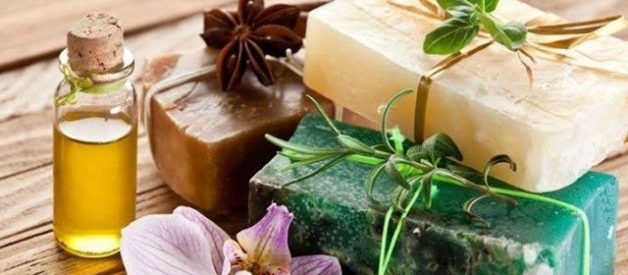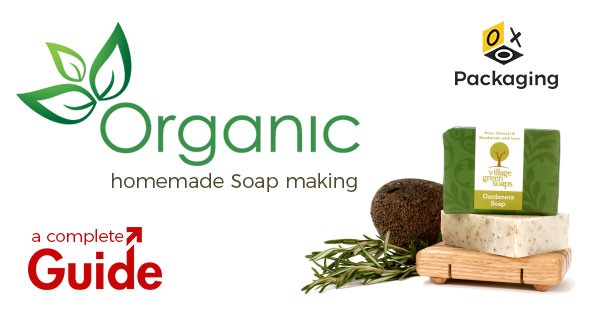
Organic soap trends are all the rage these days. People are reverting from commercial beauty brands towards milder soaps created by hobbyists and small-scale business owners. As for us, we love organic soaps. They are easily made and they often are better for your skin than commercial products that are worth thousands of dollars. If you are one of the organic soap lovers, then this article would help you to gather the courage to dabble in actual soap making. It?s not as difficult as it sounds and even if you are unsure about certain ingredients being used, you can always cook up a new recipe. Trust us, you can create soaps that would last your family for months and would save your budget even after you buy all the ingredients.
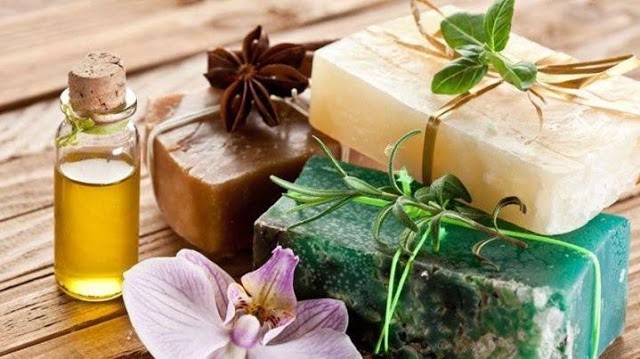
Soap Making: A Profitable Passion
If you are wondering how can soap-making become a profitable endeavor? Let us tell you how. If you are really good at soap making, you can get commercially design and printed custom soap boxes. That way uses them to present your very own products to your prospective customers. Also, you can save huge sums on seasonal presents. You can set up stalls at local fairs or supermarkets and sell your brand at nearby organic shops. Next step would be to create a multiple product ranges to offer customers more variety. There are some brands which are famous for one product only but you should explore your talents, maybe even take a class or two so you can truly become familiar with the simple art of soap making.
You can teach your art to others and when you have enough funds you can launch your organic brand. It would be easier to start a small business when people are already familiar with your brand.
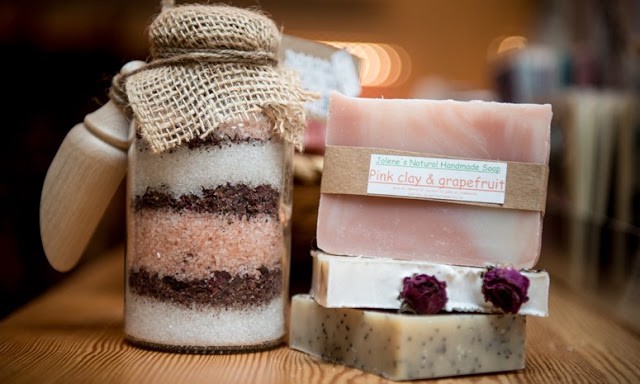
Soap Making 101: How to deal with Lye?
Making organic soaps can be either a simple task or a complicated one; depending on your expertise level and the preferences of your target customers.
When making organic soaps, lye always give people pause as its Sodium Hydroxide, a caustic alkali. In its raw form, it?s dangerous for skin and fabrics. It also can cause severe chemical reactions with some of the chemicals but is it always dangerous? When mixed right, it?s perfectly safe to use. Because lye (alkali) when combines with fats, it goes through a reaction called saponification that?s makes soap. This reaction is what allows liquid oils to mix (which doesn?t happen naturally without alkali). Technically speaking, you cannot make soap without lye even at home, as it is an un-substitutable soap ingredient. Lye is also the reason for soap to have cleansing properties
Now that you understand the importance of lye and what it actually is, it?s time to know how to handle it right. (Don?t be scared off so soon, it?s all a matter of precision that you should be able to manage without much trouble).
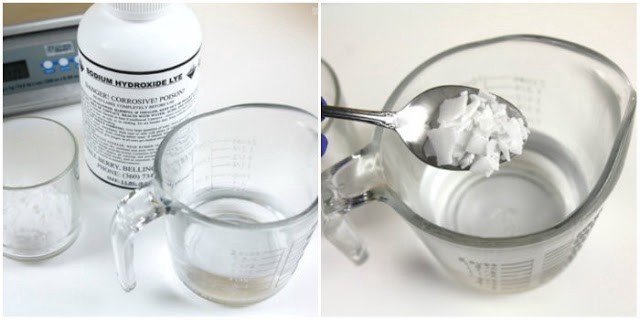
Personalized Soaps Making Hacks
- Always use 100% sodium hydroxide, or crystalized lye. Substitute liquid lye or drain cleaners are a big NO because they sometimes contain bits of metal or can cause your measurements to falter.
- Use gloves and eyewear for added caution.
- When you mix lye water, it?s likely to heat up and produce fumes about 30?60 seconds which may cause you to experience a choking sensation. Don?t be afraid it won?t last more than a few minutes.
- Add lye to water, not water to lye.
- Begin stirring right away because if you let lye clump on the bottom, it will heat up at once and explode.
- Once your lye reacts with oils (saponification), it will not remain in the final soap.
Required Equipment
- You need tools that aren?t used for cooking because you don?t need soap in your soups. The traces of which might stay even after proper cleaning up.
- Use stainless steel, tempered glass or enamel for pots for mixing. Avoid copper or aluminum as they will react with lye. Don?t use plastic either.
- Use styrene plastic or silicone spoons.
- Molds, you can get online or at local stores.
- Other things you will need include a pint, quart canning/ Mason jar, stainless steel thermometer (that can read between 90 to 200 degrees), a towel and the additional things you need to add to your soap.
- Additives in soaps give them varying scents and skincare qualities. You can choose any mix of these additives below.
- Herbs: You can use dried herbs like lavender, lemongrass, rose petals, oakmoss or chamomile. cup of dried herb will serve but don?t mix them together.
- Essential Oils: Extracted from plants? roots, stems, seeds or flowers, you can use 15?20 drops per batch.
- Colors: You can use natural colors like cinnamon powder, cocoa powder, powdered chlorophyll, turmeric, beetroot. Food colors don?t turn up well in soaps.
- Other Essences: You can use oatmeal, aloe vera gel, dry milk powder, clay, cornmeal, coffee, mineral salt as per you like.
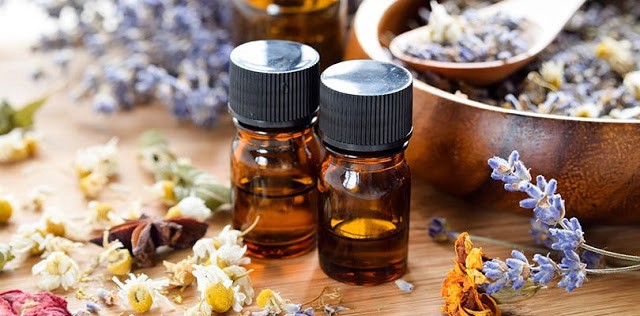
Finally, How to Make the Soap
This is just one recipe for beginners, you can explore others as you go along.

Ingredients:
- 2/3 cup coconut oil
- 2/3 cup olive oil
- 2/3 cup other liquid oil (almond, sunflower, grapeseed)
- cup lye
- cup cool distilled water
Process:
- Cover the area with newspaper. Put on protective gear (glasses and gloves).
- Measure the water in the quart jar. Keep the spoon close by.
- Measure the lye to ensure you have cup exactly. Slowly pour it into the water and stir. Stand back a little, to avoid fumes. When water begins to clear up, you can allow the mixture to sit.
- In the pint jar, add the oils together. They should be equal to one pint. Heat the jar in microwave for a minute. When the temperature is 120 degrees or so.
- The lye should also be 120 degrees by then. Wait till both liquids mixtures are between 95 and 105 degrees, or else the texture of the soap will be coarse and crumbly.
- When the lye and oils are the right temperatures, pour the oils into the mixing pot and then slowly add the while stirring the pot. Stir the mix for 5 minutes or use an immersion blender.
- The mix will become lighter in color and thicken. Then you can add herbs, essential oils or any other additive. Stir thoroughly and pour mixture into the mold.
- Cover the mold with plastic. Set the mold on the towel and wrap it to contain the heat.
- 24 hours later, check your soap. If it?s warm or mellow, let it sit for another 12- 24 hours. Once its cold and firm, place it on a parchment paper. Cut it into bars if necessary. Let the soap sit for 4 weeks or so. Turn the sides for air to reach both faces.
- Once the soap is fully done, wrap it in a wax paper or airtight container. You can also get custom soap boxes for your bars that will give a more professional look to your homemade soaps.
- Don?t forget to thoroughly clean your equipment that has been exposed to lye. White vinegar will neutralize the lye. As for cooking pots, let them sit until the residual soaps harden on the surface then wash it off in hot water.
Conclusion:The custom soap boxes for your homemade soaps are available online and will be delivered to your doorstep within a few days. You can also get these soap boxes made with logo for a commercial feel, or keep them simple with a quote or greeting. Any professional printing and packaging service can offer tailor-made soapboxes for exclusive packaging. You can choose the stock materials that you deem best for the theme of your soaps.
